Surrealism has many faces with Canadian artist Stephen Gibb
“Happy!” — Stephen Gibb, 36″ x 24″, oil on panel, 2020 The idea behind this painting was to portray sheer joy and happiness sloughing off the evil and darkness of the world like a snake sheds its skin. However, I wanted to depict the happiness in an artificial surrounding (fake trees, fake clouds, fake graphic sunburst) to suggest that sometimes happiness is an illusion. Contrasting the cartoon aspects with more realistic depictions of trees and clouds (at the edges) was my way of acknowledging the very real presence of darkness and evil in people’s lives. Part of the challenge of the painting was to attempt to have the happy face in full illumination and push everything else into a more subdued shadow.
HAPPY!
A painting also known as Surrealism of Despair
This painting examines the fragile interface between happiness and despair. Taking a symbolic perspective of happiness and sloughing off the skin of sadness and evil the landscape reflects the mood of the central image. Through the lens of surrealism, the result is a contrast between light and dark, both physically and psychologically.
-
Artist: Stephen Gibb, oil on wood panel, 2020
For more Surreal Art and Pop Surrealism Fun take a little trip to folllow Stephen Gibb on Instagram
Biography
Stephen Gibb is a Canadian artist and works in the small town of Amherstburg, in southern Ontario, and maintains a second studio in Windsor. He has a B.F.A. in visual arts from the University of Windsor and is currently represented by the St. Germain gallery in Toronto. His brand of Canadian Pop Surrealism is collected around the globe and has gained widening interest since working on the album art for hip hop artist Trippie Redd.
More Links:
Stephen Gibb on Facebook
Stephen Gibb: Official Website
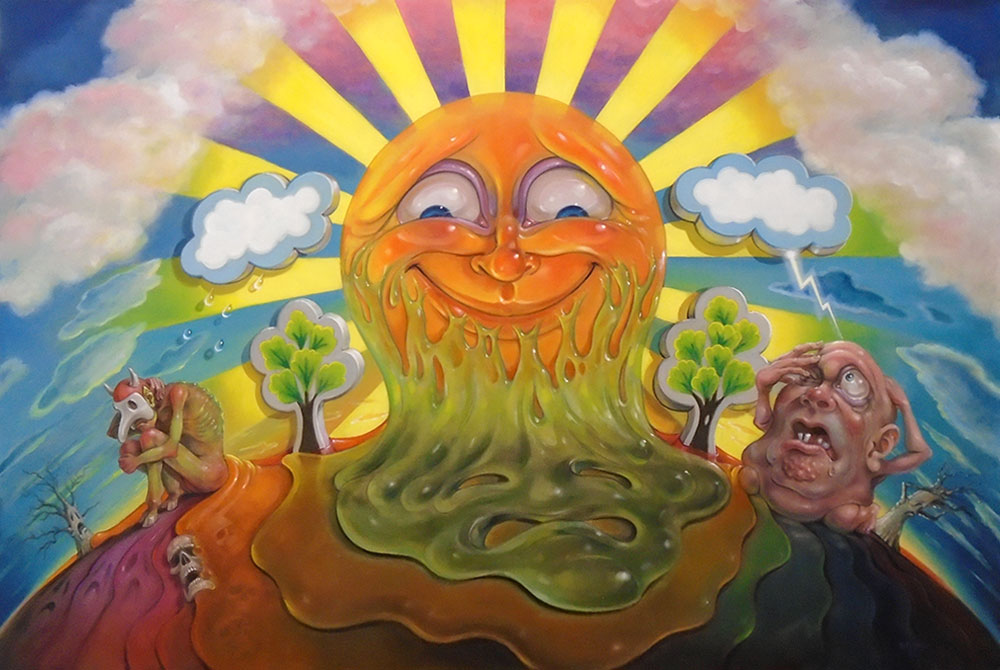
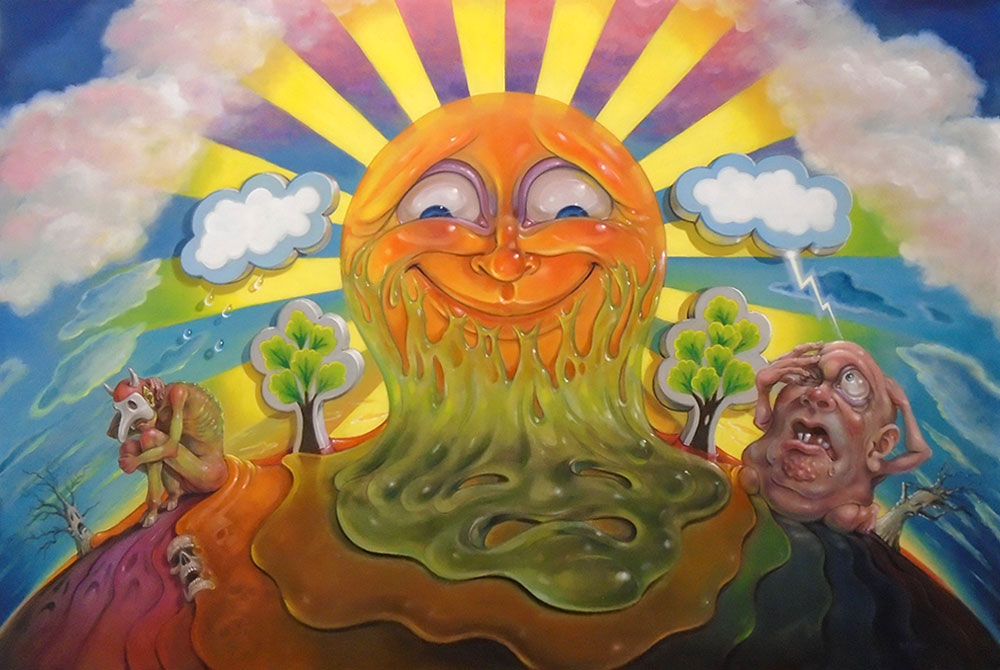
 Back to Gallery
Back to Gallery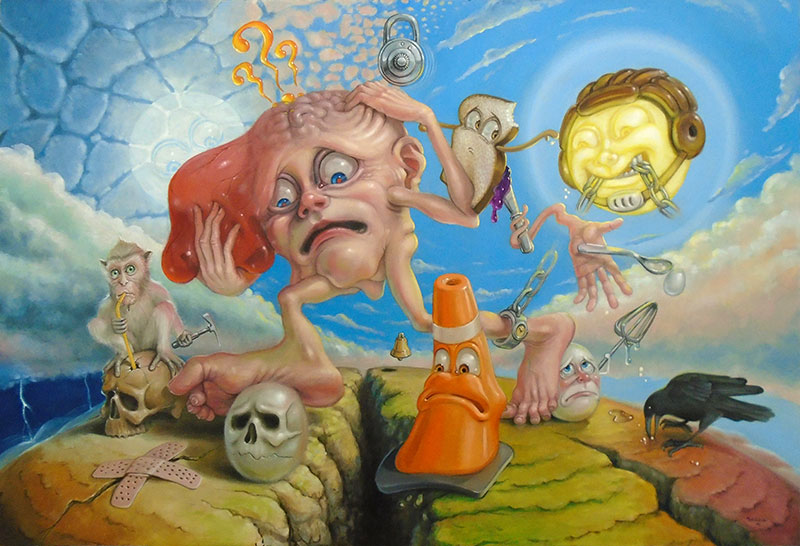
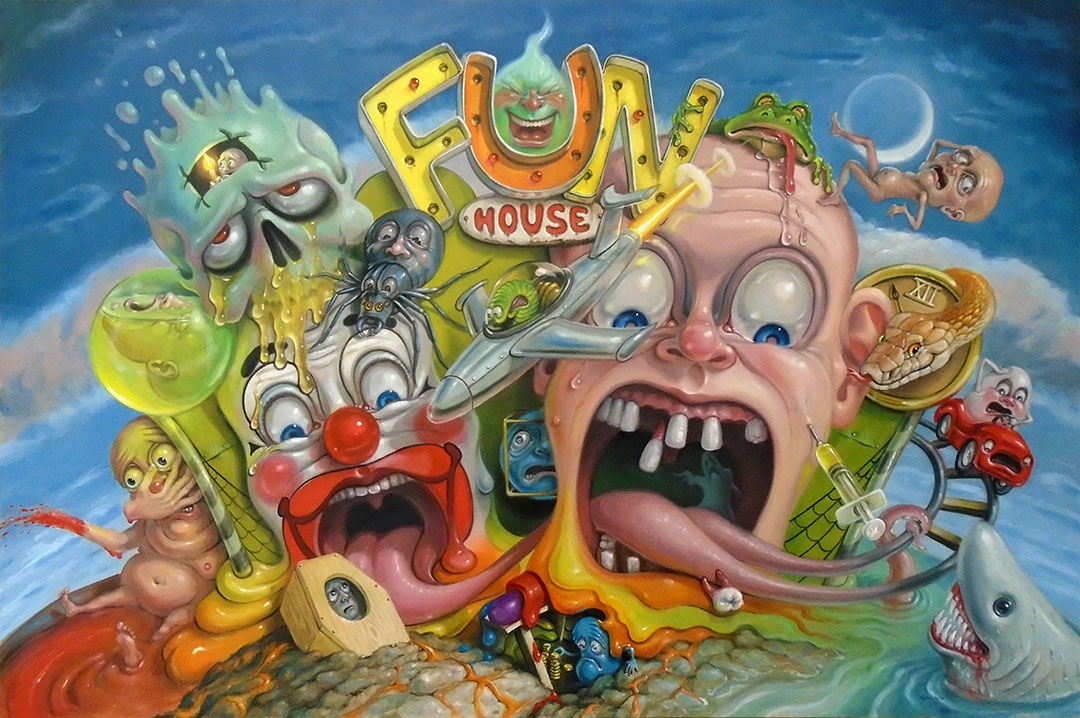
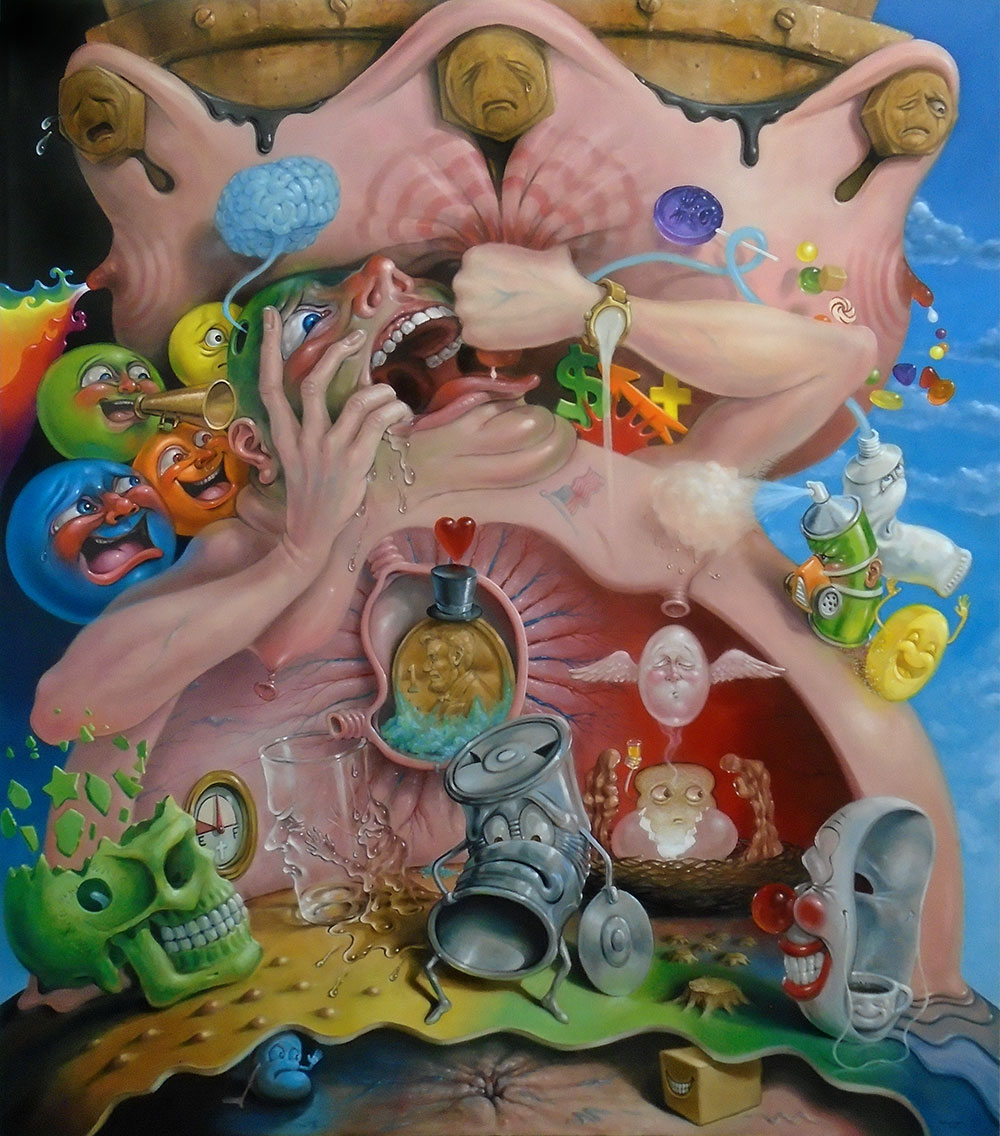
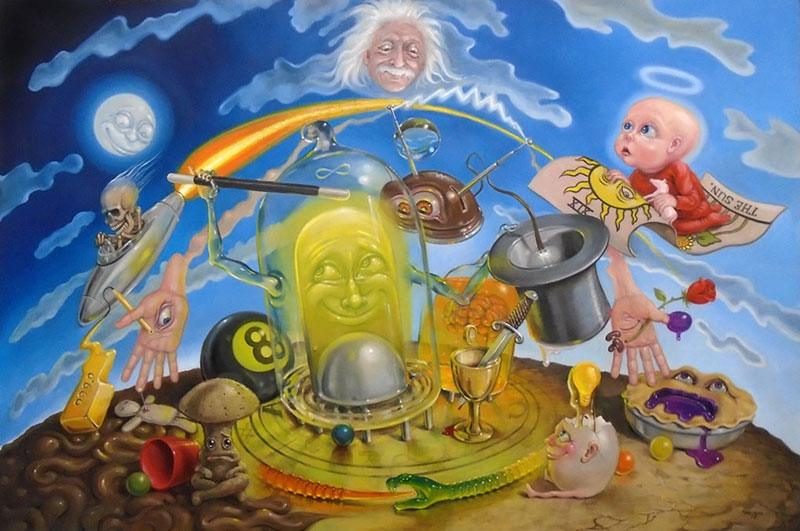
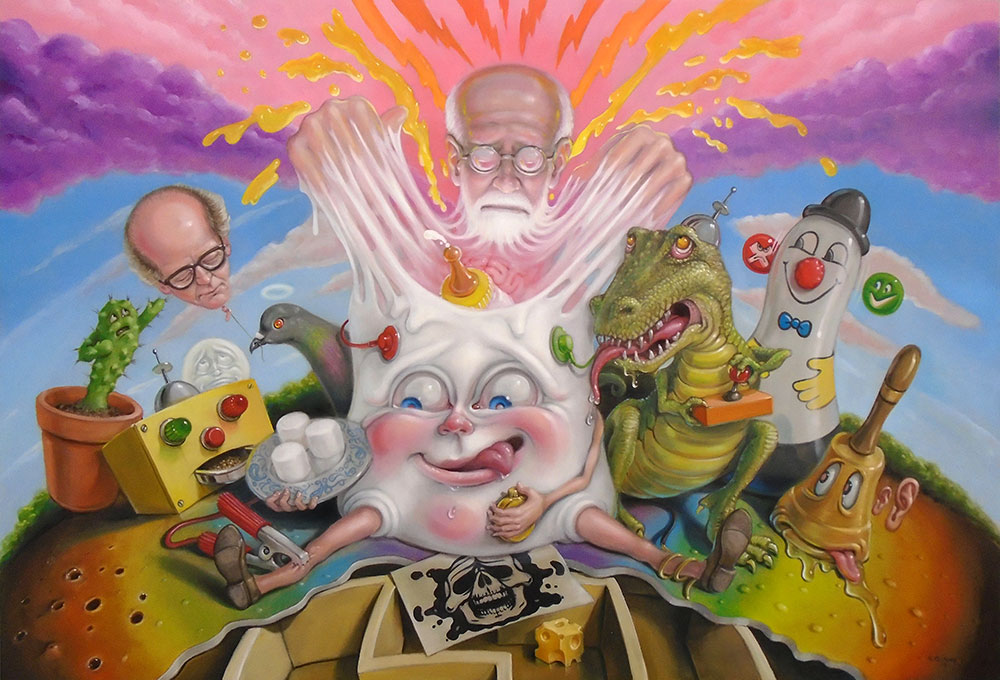
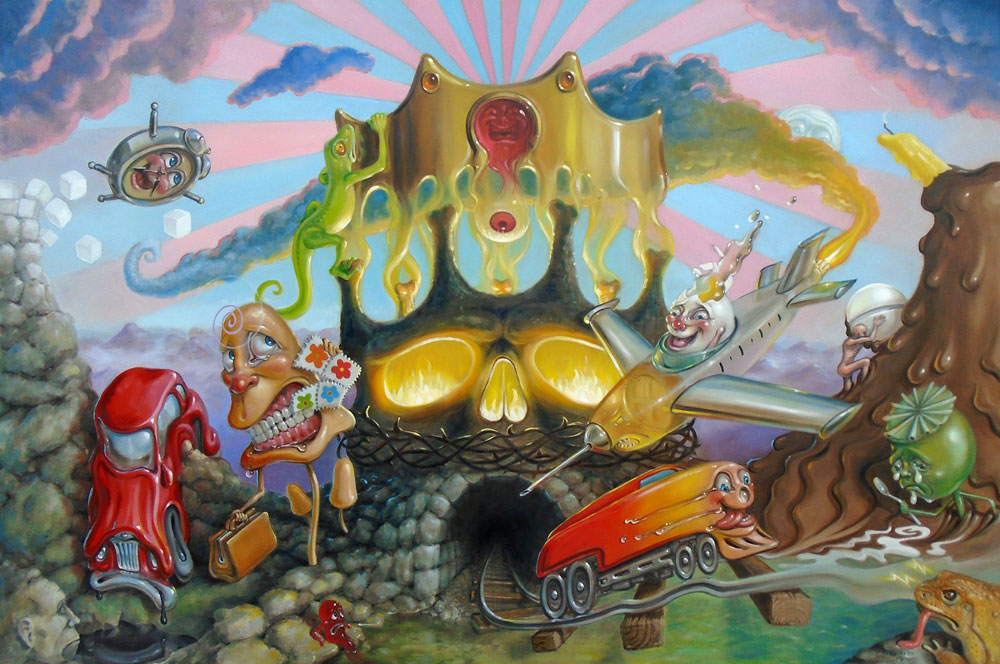
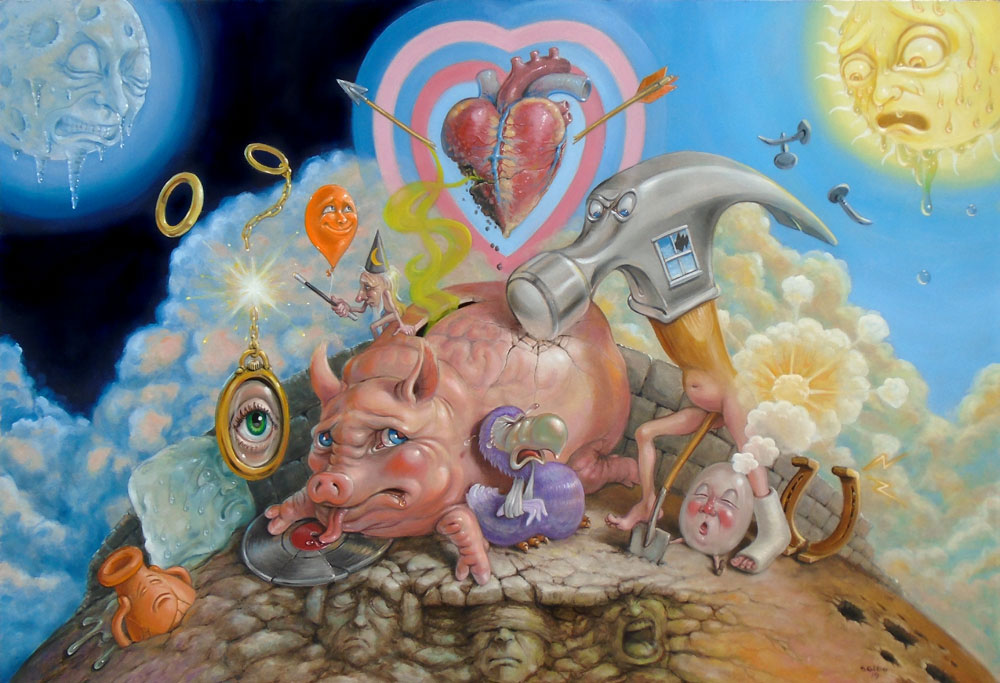
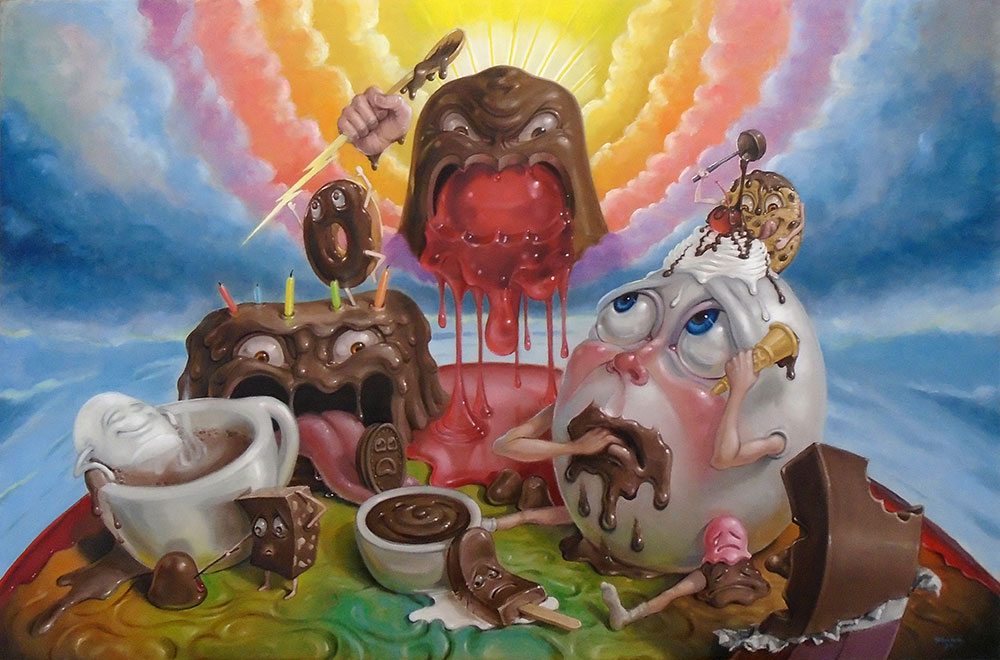

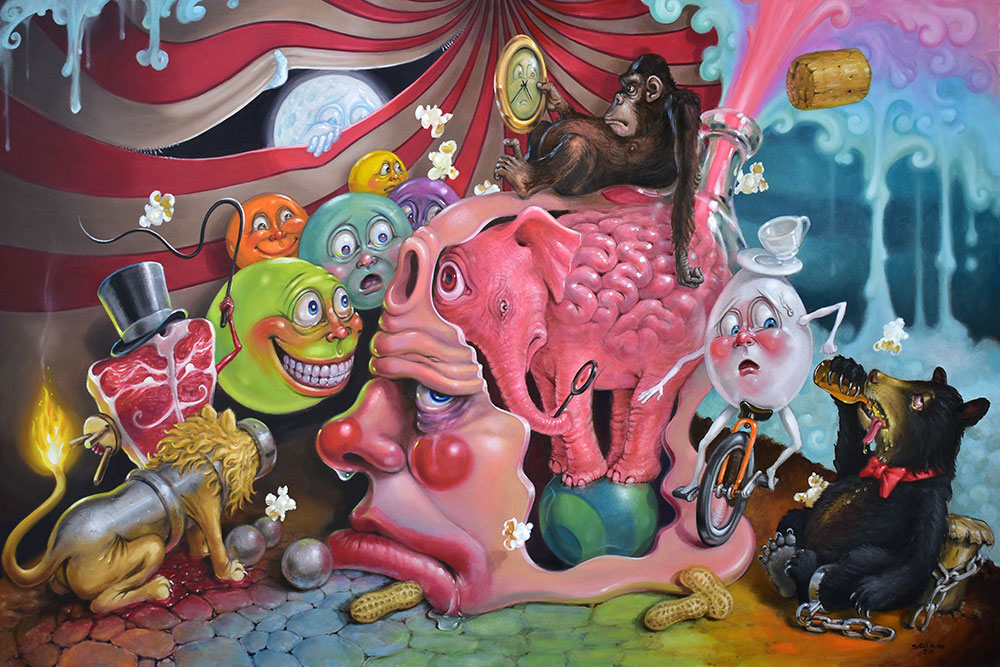
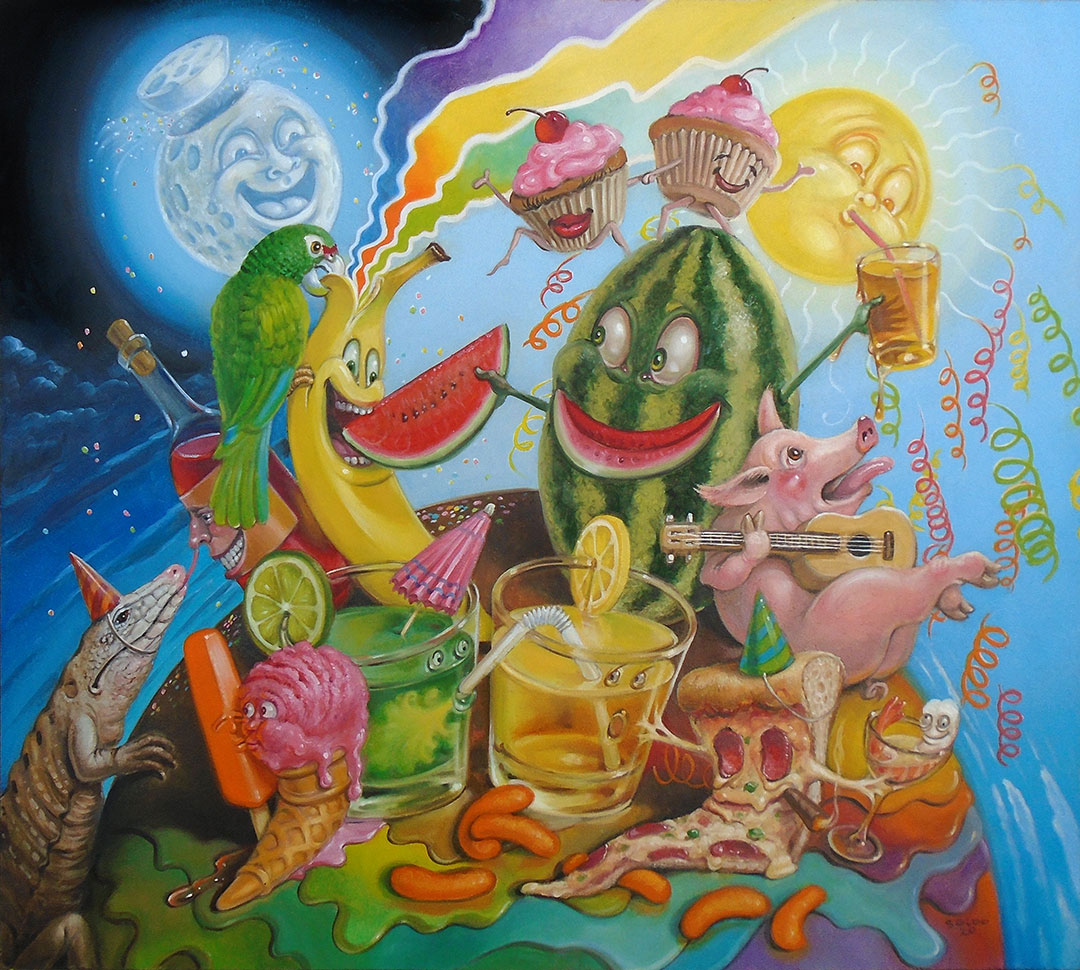
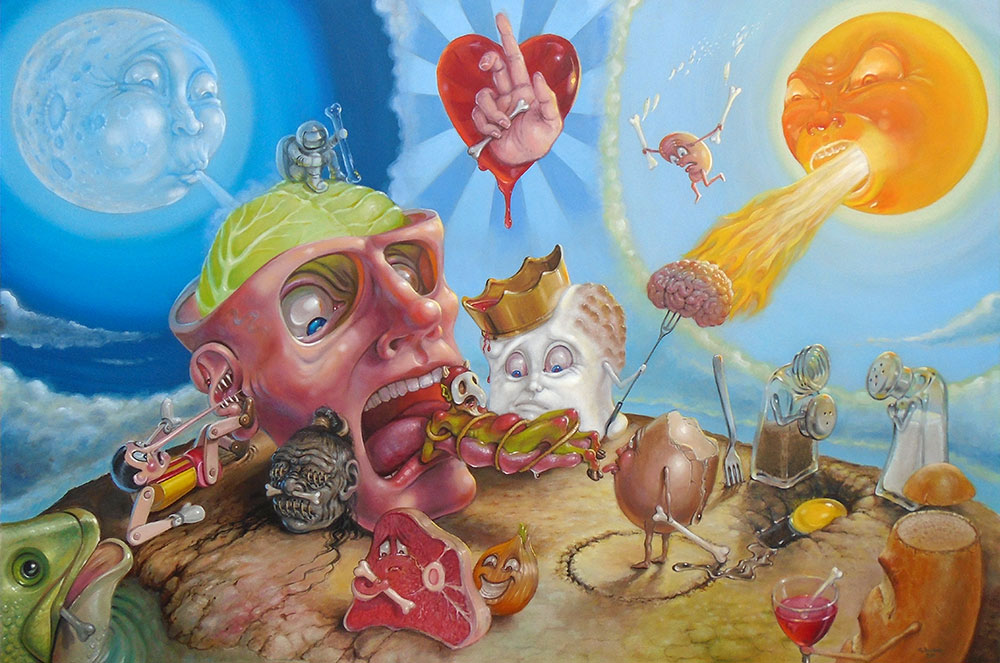
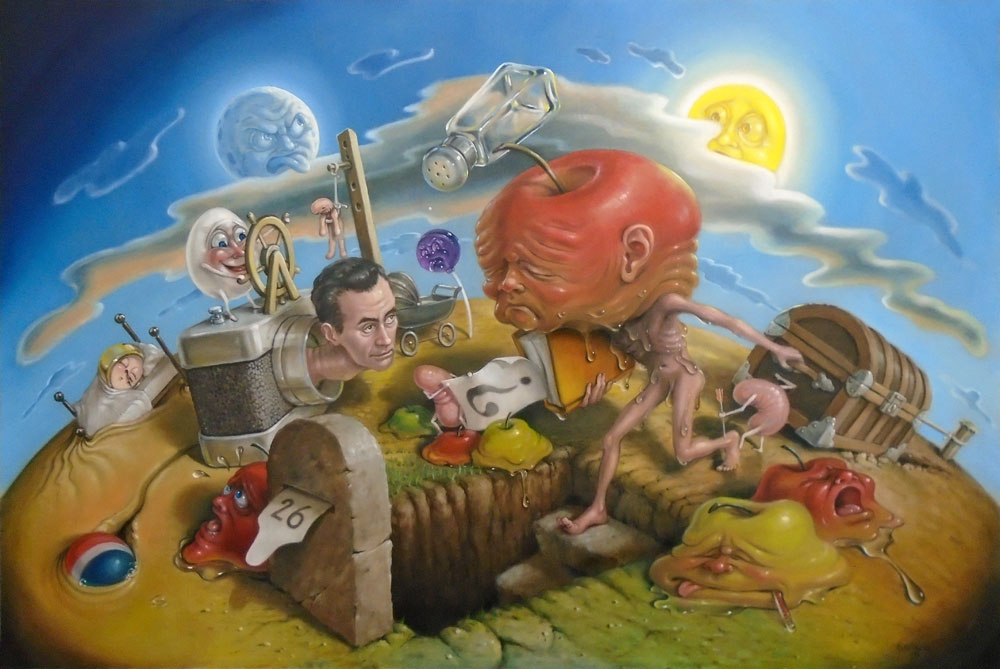
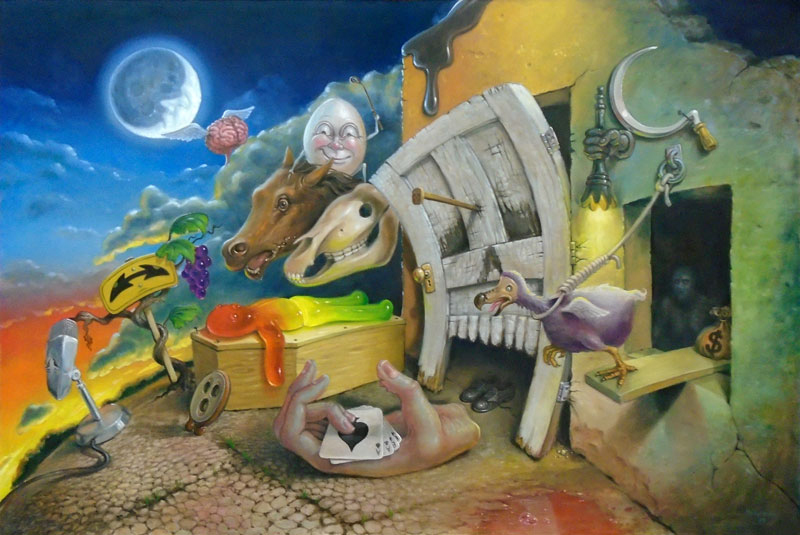
Surrealism famous for stimulating creativity
Surrealism Famous For Stimulating Creativity
Vengeful Wrath of the Chocolate Gods — 36″ x 24″, oil on panel
Creativity sometimes just comes to you and you can only surmise in hindsight as to the possible origins. Where does a cherry-chocolate god figure come from? It’s funny, bizarre, and unexpected but may be more logical than you think.
The vengeful god in the clouds is nothing new and most often is used in pop culture for humourous effect. It’s really an absurd notion—an angry god? So what could be more absurd than a god of chocolate? In ancient times (maybe even today) there were beliefs that sustained polytheism where a multitude of gods each have distinct functions—the god of the sea, the god of fire, the god of love. Why not a god of chocolate? I love chocolate and why shouldn’t it have its own deity lording over the domain of chocolate land.
The rest of the painting is just silly aspects of chocolate experiencing their chocolate reality—living, dying, being consumed and generally enjoying their chocolatyness.
This got me thinking about the creative process and how some simple prompt can lead you into depths unexplored. People often ask me where my ideas come from and through my grinding teeth I try to answer cordially. Thoughts, that’s all they are. Thoughts that get turned into images and recorded in oil paint—endless thoughts swirling all around you waiting to be plucked and converted into something wonderful.
Brian Eno had a system of cards called the Oblique Strategy cards he formulated with Peter Schmidt that essentially were simple thoughts or instructions designed to help promote creativity. I had been collecting a series of thoughts and when I discovered Eno’s cards, realized I was doing the same thing.
Although they could be construed as motivational in tone, if they are accessed during a point of creative stagnation, they may jump-start the creativity process back into high gear.
Here are my creativity-booster phrases. Pick one at random. Think of them as instructions to open your creative block — or Hallmark Cards from the Twilight Zone:
Surrealism Famous For Stimulating Creativity
Strip away the pre-supposed dignity of art
Celebrate the genius of the audience
Disrupt the universe in your own special way
Art is a veil of obfuscation hiding a prize
Rattle your mental cage and awaken the sleeping philosopher within
Defy the gravity of consciousness
Make art to be photographed and studied later
Challenge yourself with something counter-intuitive
Meditate on you idiosyncrasies
Hold the colour in your mind’s eye
Release yourself of fear by trapping it in your art
Look at clichés from different angles
Revisit a repressed thought
Contemplate the perspective of the art viewing the audience
Mine your soul for a gem to share
Loose yourself in the math of composition
Take the most obvious solution and do the opposite
Bask in the glow of the viewer’s confusion
Consider the chemistry of the brain
Hide something in plain sight
Portray the human side of evil
Invent your own dichotomy
Redirect in response to the last thing you created
Reach through the curtain of time and touch your younger self on the shoulder
Label an emotion that does not yet exist
Let the viewer know that you are watching
Make the art self-aware
Engineer tension
Set traps on the way to the most obvious conclusion
Derail a preconception
Expose a subtle notion with flamboyance
Direct attention to absurdity
Conceal a secret within the content
Distil the uncanny essence of ugliness
Pose a question and leave it hanging
Shine the light on an open-ended conclusion
Fearlessly diminish the precious
Invert the sacred and profane
Investigate a theme that terrifies you
Mock yourself
Listen closely to music that irritates you
Construct 10 answers to the question “Why?”
Let something random dictate direction
Abandon your gimmick
Create as if you are an abstractionist—if you are an abstractionist try surrealism
Look at the pure joy of futility
A childhood game is waiting to be rediscovered
Consider two outcomes and flip a coin
Make an imperfection a focal point
Share a memory of extreme profundity
Dare to confront your inner fool
Invent your own version of reality
Travel one second back in time
Stretch the rules just to the breaking point and let go
Try on a point of view in conflict with your own
Ask yourself a question and don’t answer back
Reduce your complexity to cave-dweller basics
View yourself from 100 years in the future
Sum up your process to a phantom biographer
Tell yourself it doesn’t really matter and is not that important
Let a ghost direct your hand
Contradict your present state of mind
Plan on taking one step forward and two steps back
Ponder the noise and listen for a message
Reflect on all the people you have encountered
Recall an idea you forgot that you forgot about
Surrealism Famous For Stimulating Creativity
Surrealism Famous For Stimulating Creativity
More Links:
Surreal art of Stephen Gibb on Facebook
DeviantArt featuring Canadian Surrealism of Stephen Gibb
Saatchi Art featuring Canadian artist Stephen Gibb
St. Germain Gallery: Featuring Stephen Gibb
Surrealism
シュルレアリスム
Vengeful Wrath of the Chocolate Gods
A painting also known as Surrealism and Chocolate
Humorous look at the kingdom of chocolate.
Artist: Stephen Gibb, oil on wood panel, 2020